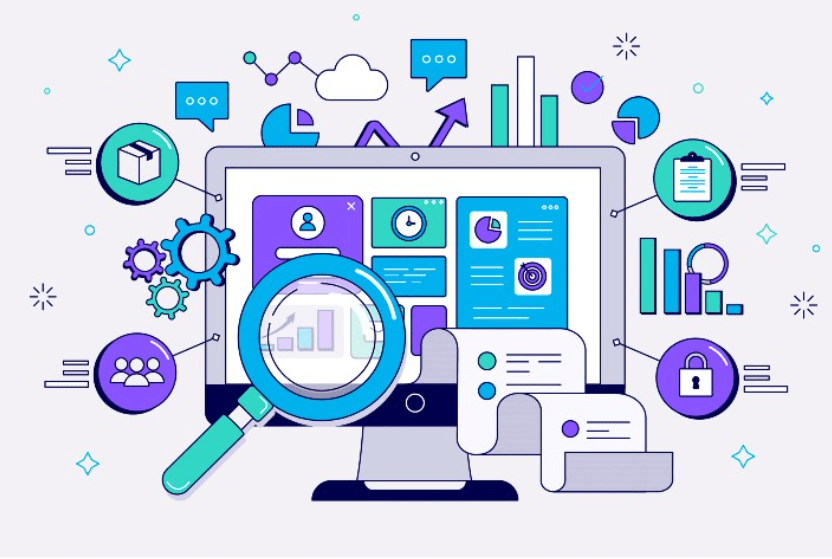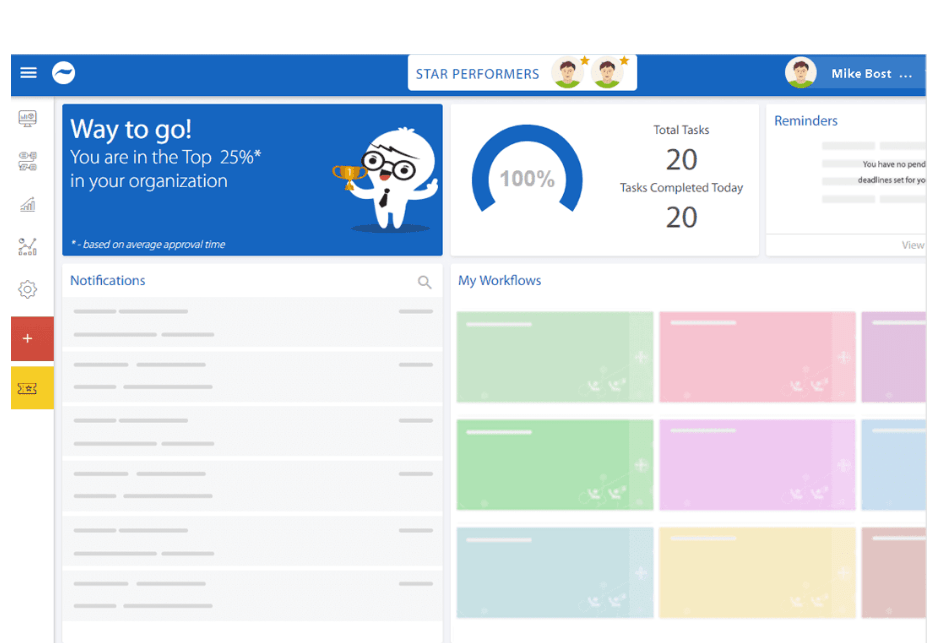Like many business owners, you might find the concept of systemizing your operations a bit overwhelming. It’s completely okay – it can indeed be quite a challenging process! However, upon investing time into researching and experimenting with various strategies within my own businesses, I’ve discovered that having robust systems can significantly enhance efficiency and pave the way for greater expansion.
Key Takeaways
- Systemizing your business involves creating organized and efficient workflows to boost efficiency, consistency, and growth.
- Benefits of systemizing your business include improved efficiency, consistency, scalability, risk mitigation, and informed decision-making.
- By systemizing your operations, you can enhance productivity and quality, support scalability and growth, ensure knowledge management and continuity, and empower decision-making and delegation.
Understanding the Basics of Business Systems
Business systemization refers to the process of creating organized and efficient workflows within your company. It involves developing standard operating procedures, leveraging technology, and continuously improving processes to boost efficiency, consistency, and growth.
Systemizing your business allows for better knowledge management, delegation of tasks, risk mitigation, and compliance while ensuring continuity in operations.
Definition of Business Systemization
Business systemization stands as a critical strategy designed to streamline operations. This process involves defining, recording, and refining procedures to ensure everything runs smoothly and consistently across all aspects of your business.
From sales processes to customer data management, effective systemization allows for smoother workflows with less hassle or ambiguity. It’s not only about organizing tasks but also about effectively managing resources to boost productivity and results.
Despite its structured nature, business systemization does leave room for creativity and changes as the company grows and evolves.

Benefits of Systemizing Your Business
Systemizing your business allows you to streamline operations, making everything run like clockwork. You could notice a significant boost in efficiency and productivity as tasks get completed in less time using fewer resources.
This not only improves the performance of individuals within your company but also enhances overall business performance.
Systems bring consistency to your business processes. Each task is performed exactly the same way each time, leading to high-quality output that meets set standards consistently. In turn, this increases customer satisfaction and loyalty.
Additionally, systemization aids with knowledge management — preventing crucial information from getting lost when team members leave or change roles.
It doesn’t stop there; systemized businesses are built for scalability and growth. They have streamlined workflows able to replicate success on a larger scale without jeopardizing quality or operational excellence.
Also worth noting is the role of systemization in risk mitigation and ensuring compliance by setting clear guidelines every employee must follow.
Lastly, good systems promote informed decision-making because they provide clarity about how all parts of the business operate together effectively – this makes it easier for managers to delegate tasks confidently without constant supervision or micromanagement which fosters an empowering work environment where employees can thrive creatively.
Efficiency and Productivity
Systemizing your business gives it a significant boost in efficiency and productivity. By creating organized processes, defining clear workflows, and simplifying tasks, we can eliminate waste and maximize the use of resources.
Every procedure from appointment setting to financial operations runs more smoothly when well-defined systems are in place. Systemized operations foster an environment where every task has a prescribed process, reducing confusion and enhancing operational excellence.
Automation is another key element that comes into play here – integrating technology solutions not only streamlines operations but also frees up valuable time for creativity and growth initiatives.
We don’t just work hard; with systemization, we work smart too!
Consistency and Quality
Consistency and quality are essential aspects of a successful business. By systemizing your business operations, you can ensure that tasks are executed consistently and at a high level of quality.
When processes are standardized and documented, employees have clear guidelines to follow, resulting in consistent outcomes. This not only improves efficiency but also enhances customer satisfaction as they receive the same level of service every time.
Moreover, by implementing effective systems, you can identify areas for improvement and take corrective actions to maintain or even exceed quality standards. Consistency and quality go hand in hand when it comes to streamlining your business operations for optimal performance.
Scalability and Growth
Scalability and growth are crucial factors for the success of any business. By systemizing your operations, you create a solid foundation that allows you to easily replicate and scale up your processes as your business expands.
This means that as you grow, your workflows and procedures remain consistent and efficient, ensuring smooth operations across all departments. With organized processes in place, you can focus on driving growth, exploring new opportunities, and expanding into new markets.
Systemization provides the clarity and structure needed to support your company’s scalability goals while maintaining high levels of productivity and customer service.
Knowledge Management and Continuity
Implementing a systemized approach to your business not only improves efficiency and productivity but also ensures knowledge management and continuity. By documenting and maintaining key processes, you can capture valuable information and insights that can be easily accessed by employees.
This helps in retaining knowledge within the organization, even when employees leave or new ones join. Systemization allows for smooth transitions, minimizing disruptions and ensuring that critical tasks are carried out consistently.
It provides clarity on responsibilities and empowers employees to make informed decisions based on the documented knowledge base. With effective knowledge management and continuity, your business can sustain its operations seamlessly while fostering growth and innovation.
Decision-making and Delegation
Making effective decisions and delegating tasks are crucial aspects of business systemization. By clearly defining roles and responsibilities, you can empower your team members to make informed choices within their areas of expertise.
This not only reduces the burden on yourself but also ensures that decisions are made efficiently, allowing for smoother operations overall. Delegation allows you to focus on more strategic aspects of your business while giving others the opportunity to grow and develop their skills.
With well-defined decision-making processes and effective delegation strategies in place, you can streamline your operations and drive your business towards success.
Continuous Improvement
Continuous improvement is an essential aspect of systemizing your business. By constantly seeking ways to enhance and optimize your processes, you can ensure that your operations are always operating at their best.
This involves regularly reviewing and evaluating your systems, looking for areas where efficiency can be increased or bottlenecks eliminated. By making incremental improvements over time, you can continually refine and evolve your business, driving growth and staying ahead of the competition.
With a focus on continuous improvement, you can create a culture of excellence within your organization and strive for operational perfection.
Risk Mitigation and Compliance
Implementing systematic strategies for streamlined operations is crucial not only for efficiency and productivity but also for risk mitigation and compliance. By systemizing your business, you can establish clear processes that adhere to legal and regulatory requirements, reducing the likelihood of errors or non-compliance.
Systemization allows you to identify potential risks within your operations and implement controls to mitigate them effectively. Keeping documentation up-to-date and regularly reviewing processes ensures that your business remains compliant with changing regulations, minimizing potential legal issues.
With a well-structured system in place, you can confidently navigate the complex landscape of risk and compliance while focusing on achieving your business goals.

How to Systemize Your Business
To systemize your business, start by creating standard operating procedures (SOPs) for each process and task within your organization. Assess your current processes to identify areas that need improvement or automation.
Develop a systemization strategy and implement systems across all departments. Leverage technology and automation tools to simplify workflows and eliminate manual tasks. Continuously monitor, evaluate, and iterate on your systems to ensure they are effective and efficient in driving your business forward.
Creating Standard Operating Procedures (SOPs)
Creating Standard Operating Procedures (SOPs) is an essential step in systemizing your business. SOPs serve as a guide for employees, outlining step-by-step instructions on how to perform specific tasks or processes. They ensure consistency and efficiency in operations, while also providing clarity and structure for employees. Here are some key points to consider when creating SOPs:
- Clearly define the objective of the procedure.
- Break down the procedure into clear and sequential steps.
- Include any necessary materials, tools, or resources needed for the task.
- Provide detailed instructions for each step, including any specific guidelines or requirements.
- Consider including visuals such as diagrams or images to enhance understanding.
- Use simple and concise language to make the SOP easy to follow.
- Ensure that the SOP is easily accessible to all relevant employees.
- Regularly review and update SOPs as needed to reflect changes in processes or best practices.
Assessing Your Current Processes
To systemize your business effectively, it is important to assess your current processes. Here are the key steps involved in assessing your current processes:
| Step No. | Action | Description |
|---|---|---|
| 1 | Identification | Identify all tasks and activities currently being performed in your business. |
| 2 | Evaluation | Assess the efficiency and effectiveness of each process based on factors like time, resources, and output quality. |
| 3 | Feedback Collection | Obtain feedback from employees involved in the processes to understand challenges and get improvement suggestions. |
| 4 | Data Analysis | Analyze operational data and metrics to pinpoint bottlenecks or inefficiencies. |
| 5 | Comparison | Compare current processes with industry standards to identify gaps or potential enhancements. |
| 6 | Prioritization | Rank processes based on their impact on productivity, customer satisfaction, or cost-effectiveness for in-depth evaluation. |
| 7 | External Insights | Consider bringing in external experts or conducting audits for a fresh view on existing processes. |
Developing a Systemization Strategy
To successfully systemize your business, you need to develop a strategic plan. This involves assessing your current processes, identifying areas for improvement, and determining how to implement effective systems throughout your organization.
By creating standard operating procedures (SOPs), leveraging technology and automation, and continuously monitoring and evaluating your systems, you can streamline operations and enhance efficiency.
A well-thought-out systemization strategy will provide clarity, eliminate guesswork, and enable smoother workflows that lead to increased productivity and improved overall performance.
Implementing Systems Across Your Organization
Implementing systems across your organization is a crucial step in streamlining your business operations. Here are the key actions you need to take:
| Action | Description |
|---|---|
| Identify the areas that need systemization | Assess your current processes and workflows to determine which areas can benefit from systemization. |
| Create Standard Operating Procedures (SOPs) | Develop clear SOPs that outline step-by-step instructions for each process or task within your organization. |
| Communicate the changes | Inform your employees about the new systems and provide them with training to ensure they understand how to use them effectively. |
| Evaluate and select technology solutions | Explore technology tools and software that can automate tasks, enhance collaboration, and improve overall efficiency. |
| Implement the systems gradually | Start with one department or process at a time to minimize disruption and allow for a smooth transition. |
| Monitor and evaluate performance | Continuously monitor how the implemented systems are functioning and assess their impact on productivity and efficiency. |
| Seek feedback from employees | Encourage feedback from your team members regarding any issues or improvements they suggest for the implemented systems. |
| Iterate and improve | Based on feedback and performance evaluation, make necessary adjustments to optimize your systems further. |
Leveraging Technology and Automation
Leveraging technology and automation is a key component of systemizing your business. By incorporating advanced tools and software, you can streamline processes, reduce manual work, and increase efficiency.
Automation allows for the elimination of repetitive tasks, freeing up time for more strategic activities. Technology solutions such as project management software, CRM systems, and workflow automation tools provide clarity and organization to your operations.
With technological advancements at your disposal, you can simplify complex workflows and ensure consistent execution across different departments or teams. Integrating technology into your business systems enables better communication with customers, resulting in improved customer service.
Monitoring, Evaluating, and Iterating
Monitoring, evaluating, and iterating are essential steps in the process of systemizing your business. These activities allow you to continuously improve and adapt your systems to ensure optimal performance. Here are some key aspects to consider:
| Action | Description |
|---|---|
| Regularly monitor your systems | Keep a close eye on how well your systems are functioning and identify any areas that may need improvement or adjustment. |
| Evaluate system effectiveness | Assess whether your systems are achieving their intended goals and delivering the desired outcomes. Collect data, seek feedback, and analyze results for evaluation. |
| Identify iteration opportunities | Use monitoring and evaluation data to identify areas for refinement, streamlining, or addressing issues in your systems. |
| Implement changes and improvements | Take action to implement necessary modifications, such as updating SOPs, providing additional training, or leveraging technology solutions to enhance your systems. |
| Continuously repeat the cycle | Systemization is an ongoing process. Regularly review and improve your systems to ensure they effectively support your business objectives. |

Scaling and Expanding with Effective Systems
Scaling and expanding your business is an exciting phase, but it can also come with its challenges. However, by implementing effective systems, you can navigate this growth more efficiently.
With standardized processes in place, you can replicate your success and ensure consistency as you expand. These systems will provide clarity for your team and streamline workflows, allowing tasks to be completed seamlessly.
By organizing and automating various aspects of your business such as sales processes, financial operations, and communication channels, you can eliminate bottlenecks and improve customer service.
Implementing these effective systems will not only support your current growth but also set a solid foundation for future expansion opportunities.
One key benefit of scaling with effective systems is the ability to manage knowledge continuity within the organization. As new team members join or roles change over time, having documented standard operating procedures (SOPs) ensures that everyone has access to critical information required to perform their responsibilities effectively.
This minimizes disruption during transitions while facilitating a smoother onboarding process for new hires.
In addition to efficiency gains from systemizing your business operations when scaling up, adopting technology solutions can enhance performance even further. Leveraging automation tools helps reduce manual workload and increase productivity across different functions in the company.
It allows employees to focus on higher-value tasks rather than spending valuable time on repetitive activities.
Overall, scaling and expanding require careful planning and consideration of how effective systems can support growth while maintaining consistency and quality throughout the organization’s operations.
By streamlining workflows through systemization strategies like creating SOPs or leveraging technology solutions for automation purposes – businesses become better equipped to handle increasing demands effectively without sacrificing customer satisfaction or internal productivity levels.
Overcoming Challenges and Pitfalls
Overcoming challenges and pitfalls is an essential part of systemizing your business. As you implement new systems and processes, you may encounter resistance from employees who are resistant to change.
It’s important to communicate the benefits of systemization and address any concerns or fears that arise. Additionally, there may be technical challenges when integrating new technology or automation tools into your operations.
Another common pitfall is failing to adapt and update your systems as needed. Business environments are constantly evolving, so it’s crucial to regularly evaluate and iterate on your processes.
Monitoring performance is also key in overcoming challenges. Keep a close eye on how well the systems are being implemented across all areas of the organization, identify any bottlenecks or inefficiencies, and make necessary adjustments.
Lastly, don’t underestimate the importance of employee training for successful system implementation. Provide comprehensive training programs to ensure everyone understands their roles within the new systems and feels empowered to utilize them effectively.
By addressing these challenges head-on and learning from any missteps along the way, you can successfully overcome obstacles that may arise during the process of systemizing your business.

How Cflow Can Help Systemize Your Business
Cflow is a powerful workflow automation tool that can greatly assist in systemizing your business. With Cflow, you can easily create and manage standardized workflows for various processes within your organization.
By automating repetitive tasks and eliminating manual errors, Cflow helps boost efficiency and productivity. It streamlines your business operations by providing clarity and structure to each step of the process.
With Cflow’s intuitive drag-and-drop interface, you can design custom workflows tailored to your specific needs. You can define roles, set deadlines, and assign tasks with just a few clicks.
Additionally, Cflow offers seamless integration with other popular applications like CRM systems, accounting software, and project management tools.
By using Cflow to systemize your business processes, you’ll be able to track the progress of each task in real time. This allows for greater visibility into the status of projects and enables timely decision-making.
Moreover, all relevant information is centralized within the platform, ensuring continuity even when team members change or are unavailable.
Cflow also provides comprehensive reporting capabilities that allow you to monitor key performance indicators (KPIs) and identify areas for improvement. By analyzing these reports, you can iterate on your systems and continuously enhance operational excellence.
In summary, Cflow simplifies the process of systemizing your business by offering an easy-to-use workflow automation solution. It enhances efficiency by automating tasks and providing transparency throughout every stage of the process.
Take advantage of this powerful tool to streamline your operations effectively.

Conclusion
In conclusion, systemizing your business is a crucial step in streamlining operations and driving growth. By creating standardized processes, leveraging technology, and continuously improving your systems, you can enhance efficiency, boost productivity, and achieve operational excellence.
So start implementing systematic strategies today to optimize your business processes and take your organization to the next level.
Frequently Asked Questions
Why should I systemize my business?
Systemizing your business can help streamline operations, increase efficiency, and improve productivity by creating clear processes and procedures that everyone in the organization can follow.
How do I start systemizing my business?
To start systemizing your business, begin by identifying repetitive tasks or areas that could benefit from standardization. Document the steps involved in these processes and create guidelines for employees to follow.
What are the benefits of streamlining operations?
Streamlining operations can lead to increased profitability, reduced errors or mistakes, improved customer satisfaction, and better overall coordination within the company.
Can small businesses also benefit from systemizing their operations?
Yes, even small businesses can greatly benefit from systemizing their operations as it helps increase consistency, scalability, and allows for smoother day-to-day management.
Are there any tools or software available to assist with the process of systemizing a business?
Yes, there are various tools and software available that can aid in the process of systemizing a business such as project management tools or workflow automation platforms. These tools can help organize tasks and streamline communication among team members.



